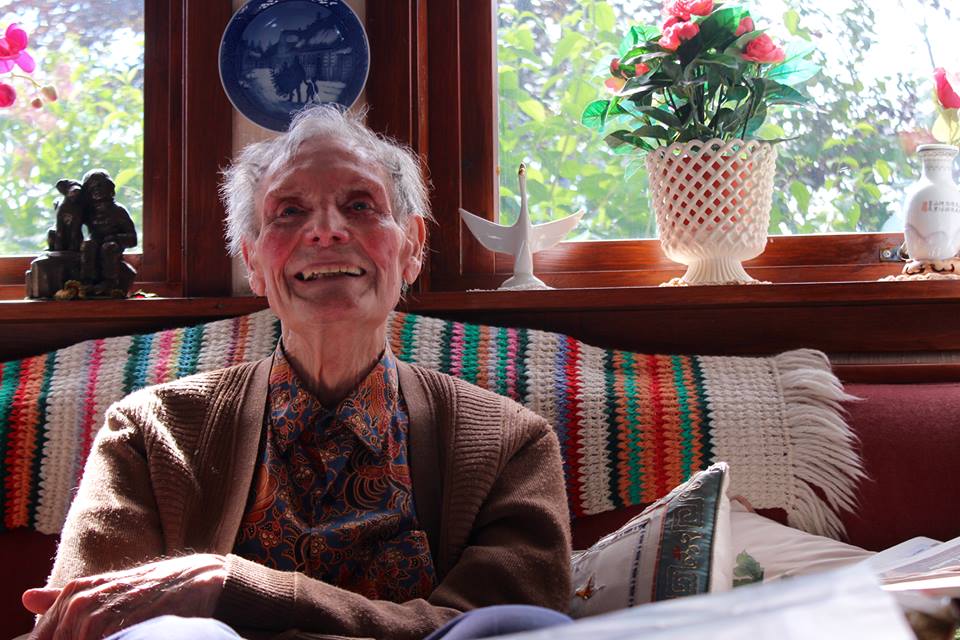
The founder of Puli Christian Hospital, Bjarne Gislefoss from Konsmo in Southern Norway, is well-known in Taiwan for his diaconal work. He has received many honors, both by presidents and organizations in Taiwan as well from the King of Norway. On January 19th, he turned 95 years old, and invited friends to is home.
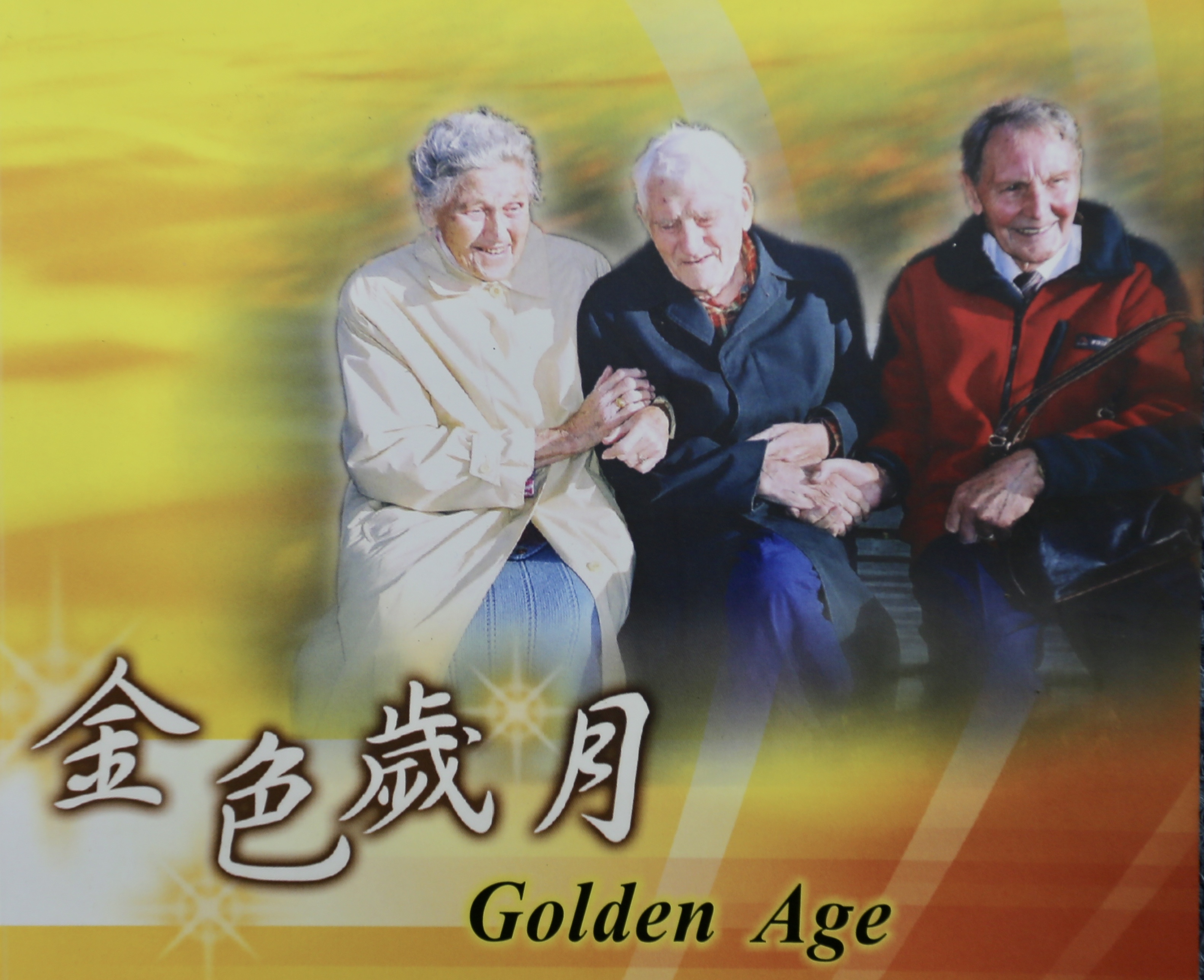
A booklet about the care of elderly in Taiwan has cover photo with Alfhild and Bjarne Gislefoss on the sides of Kristoffer Fotland.
As young, Bjarne wanted to travel to the mountains of China as a missionary. But when he finished the deacon education, China was closed for missionaries. The Norwegian Mission Alliance offered to send him to a new field in Japan, but Bjarne wanted to work among the Chinese. Former missionaries to China, Gyda and Olav Skagen, were in Norway ready for a new term in Asia. Kristoffer Fotland and his wife moved from China to Taiwan in August 1949 and would like to have reinforcement from Norway, but many thought it would not last long before Taiwan would be closed by the communists. Nevertheless, Bjarne followed the Skagen couple on a Danish cargo ship to Hong Kong and further with an English boat to the port city of Keelung north of Taipei. Kristoffer Fotland was at the pier to receive them. The journey took 3 months, Bjarne had been seasick all the way and could only eat when the ship stayed one or two weeks in a harbour.
While Bjarne studied the language, he was a nurse together with Dr Fotland at the Presbyterian Mackay Memorial Hospital in Taipei. There he met with the Presbyterian American missionary Lillian Dickson who came to Taiwan in 1927. She asked him for help in the lepra village west of Taipei. Near by she built a boys’ home where Bjarne lived while helping the lepers. Lillian and Bjarne went to visit prisons and offered homeless young poor inmates a new life in their Boys Home with more then 30 beds. Some of them were born out of marriage and, at the time, were not entitled to schooling. As a US citizen with an embassy in Taipei, authorities had respect for Lillian. She got the “wrong” kids into schools. Bjarne made healthy food and became a good father figure for them.
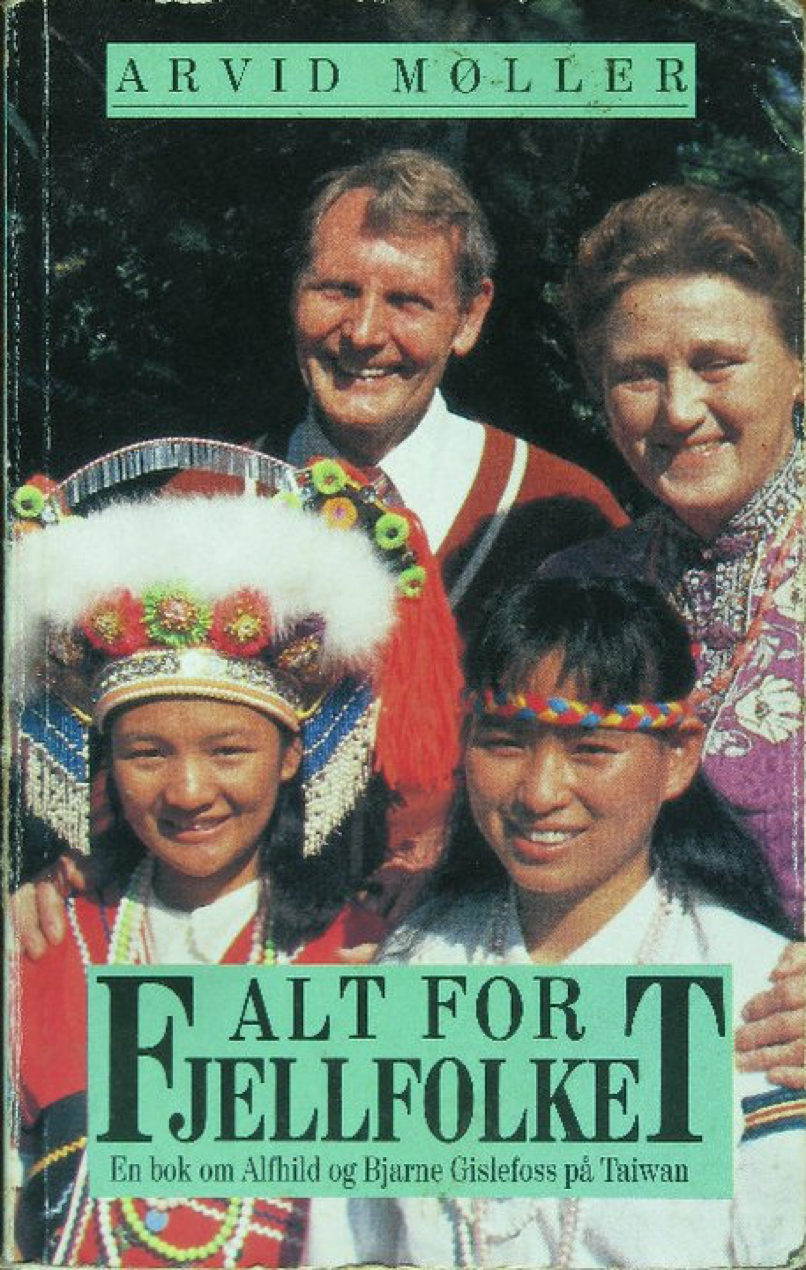 In 1989 a book about Alfhild and Bjarne Gislefoss was released in Norway
In 1989 a book about Alfhild and Bjarne Gislefoss was released in Norway
Lillian Dickson had visited the beautiful high mountains of Taiwan. Puli was a town in the center of the island. Taiwan’s Polynesian indigenous peoples living there used to be called the mountain people. They were poor, didn´t speak Chinese, but some could speak Japanese because Taiwan had been Japanese from 1895 till 1945. Lillian told Bjarne, they need cheap or free health services. Bjarne saw his opportunity to move into the mountains. Lillian helped him with money from the United States to build a clinic and a nursery of bamboo. They employed a Taiwanese doctor, starting with 6 beds. But the first day 15 patients came! Soon, between three and four thousand patients came every month and the nursery had to expand with more bamboo huts. 80% of the indigenous population suffered from tuberculosis.
Bop Pierce, a reporter for an American news agency during the Korean war that broke out in 1950, came to Taiwan. He had seen the devastation and distress in Korea and elsewhere in Asia and started the organization World Vision. Bob Pierce needed someone in Korea to help all the orphanage children, many of them with American soldiers as fathers. Bob wanted to build 100 orphanages for 13,000 children. He asked Bjarne to be his co-worker.
So Bjarne went to Korea, a war-torn country that lacked the most. He stayed there for two years. There were still American soldiers in Korea. Most Americans distanced their colleagues’ contact with Korean women during and after the war. Often some of them visited the orphanages with gifts. In this way, the children to be adopted to the United States got used to foreigners, Bjarne saw this as a big advantage. Children of mixed race were a shame for the women, many children were abandoned by their mothers. The children were found ill and unclean with tuberculosis, lice and scabies. If the kids failed any tiny thing, they were denied visa to the United States. To get the children approved for adoption, Bjarne had sometimes to swap x-rays.
When many children were ready for adoption, an airplane was chartered to fly them across the Pacific to the United States. Bjarne once joined a flight to Los Angeles where television reporters filmed the reception. It created a positive reaction that made more couples want to adopt half-Americans from Korea.
Two years later Bjarne was back in Puli. Bob Pierce noticed a plateau at the entrance to the village, gave Bjarne a blank check and said “Claim the hill, build a hospital at the top of the hill!”
For the ten years anniversary of the adoption to American couples, a reunion celebration was planed to be broadcasted live in USA. Few days before the program, the TV station wanted Bjarne to attend. But Taiwan required at that time both exit- and re-entry visas when leaving Taiwan and needed two weeks to make it. Bjarne would not be able to get an exit visa before the anniversary program. But then, the US airforce offered to smuggle him over to the states and back in one of their flights. Until 1978, Taiwan had several US military bases and diplomatic relationship with the United States.
In the early 1960s, surgeon missionary Kristoffer Fotland in Pingtung in Southern Taiwan heard about the Norwegian anesthetist Alfhild Jensen in the United States. He invited her to help him in Taiwan. At that time, no intravenous anesthesia excisted in Taiwan other than possibly at the Veteran Hospital in Taipei, a hospital not for the civilian population. Fotland used ether for anesthesia during surgery.
Alfhild took a half-year leave and brought some anesthetic equipment with her to Taiwan. She saw how outdated Taiwan was and became a great help to Dr. Fotland.
One day Kristoffer took Alfhild up to Puli to show her other mission stations. They got a hail with an American military plane to Taichung from where they took a bus up to Puli 650 meters above sea level. Bjarne served them coffee grown and burned locally. He showed them the hospital which consisted only one building and told about the plans for a “proper” hospital. Alfhild was impressed with the breakthrough work and saw the opportunities for growth.
Dr. Jensen started to commute between Puli and Pingtung to help in both places. One day she came back to Pingtung and could tell Dr. Fotland, she got engaged with Mr. Gislefoss. So when the half-year was over, she returned to the United States and quit the job. In March 1963 they married in Taipei and moved together. But it turned out that the priest didn’t have the marriage right, they were not formally married. It was settled within the week. Then Alfhild was 45 years old, Bjarne 40.
Together the Gislefoss couple turned the hospital to become an university and county hospital. One of their nursing students got her degree approved in Norway and is currently employed at Aker Hospital. Both Bjarne and Alfhild showed great care for each patient. Bjarne even learned to communicate in the local Bunen language. The Aborigines all treat Alfhild and Bjarne as family members and just call them grandmother and grandfather.
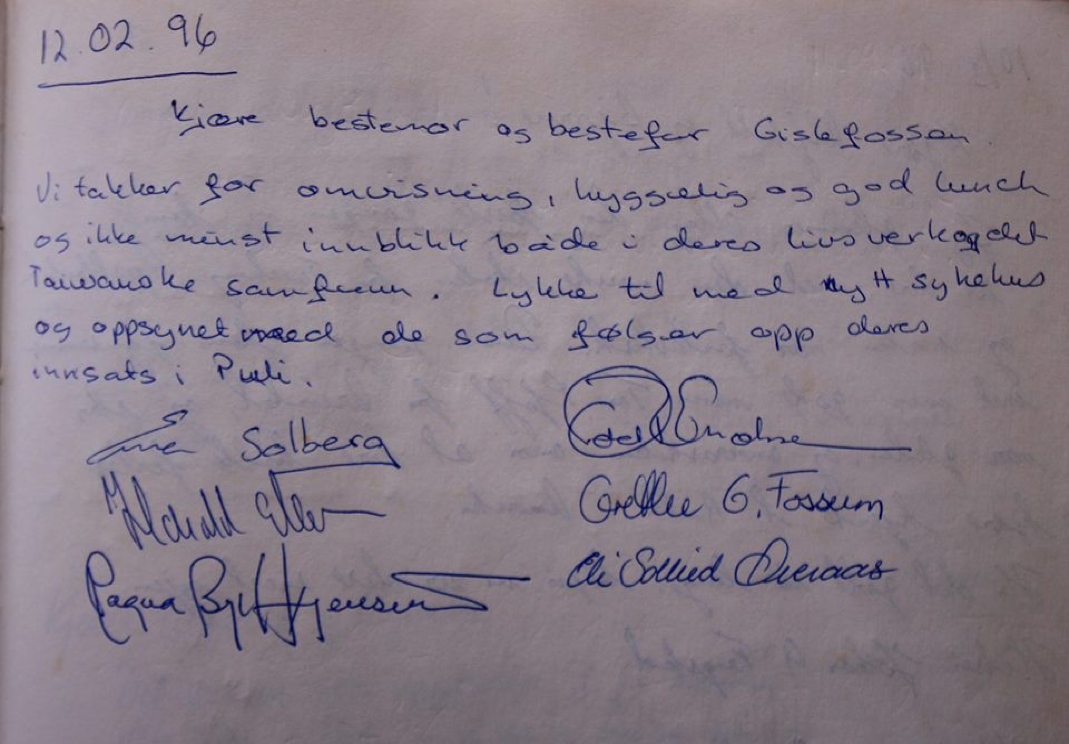
Many parliamentary representatives from Norway have visited Taiwan including a trip to visit the Gislefoss couple in Puli. In February 1996, Erna Solberg, now prime minister of Norway, led a delegation to Taiwan where she wrote “Dear Grandma and Grandfather Gislefoss” in their guestbook.
Night to September 21, 1999 is a tragic date for Taiwan. The country was hit by a powerful earthquake with a surface strength of 7.1 . The center was not far from Puli. 2415 people were killed, over 100,000 people became homeless. Puli Christian Hospital was built on the hill and suffered some injuries, but did not collapse. Aid was sent from all over the world. The hospital got a fire truck, seven buses, containers etc. They got much more then they needed. The fire truck was never used, it was too expencive to keep it going. At the same time, the tax system did not allow it to be sold or given away. Even the Norwegian Government gave aid money to Taiwan. As all their assistance to Taiwan in principle had to be channeled through Beijing due to the applied One China Policy, there was no direct connection to Taiwan. Luckily, Taiwan had a Norwegian Trade Council representation in Taipei at the time. The Director Geir Torkehagen did a great but not easy job to get funds to where it belonged. With the help of the Oslo head quarters he managed to get the funds funneled directed and administrated by Puli Christian Hospital with Mrs. Grace Lin, Foundation for Social Services, as the project manager. The funds were provided to re-establish safe water supply to an Aborigines village in the Miaoli mountains.
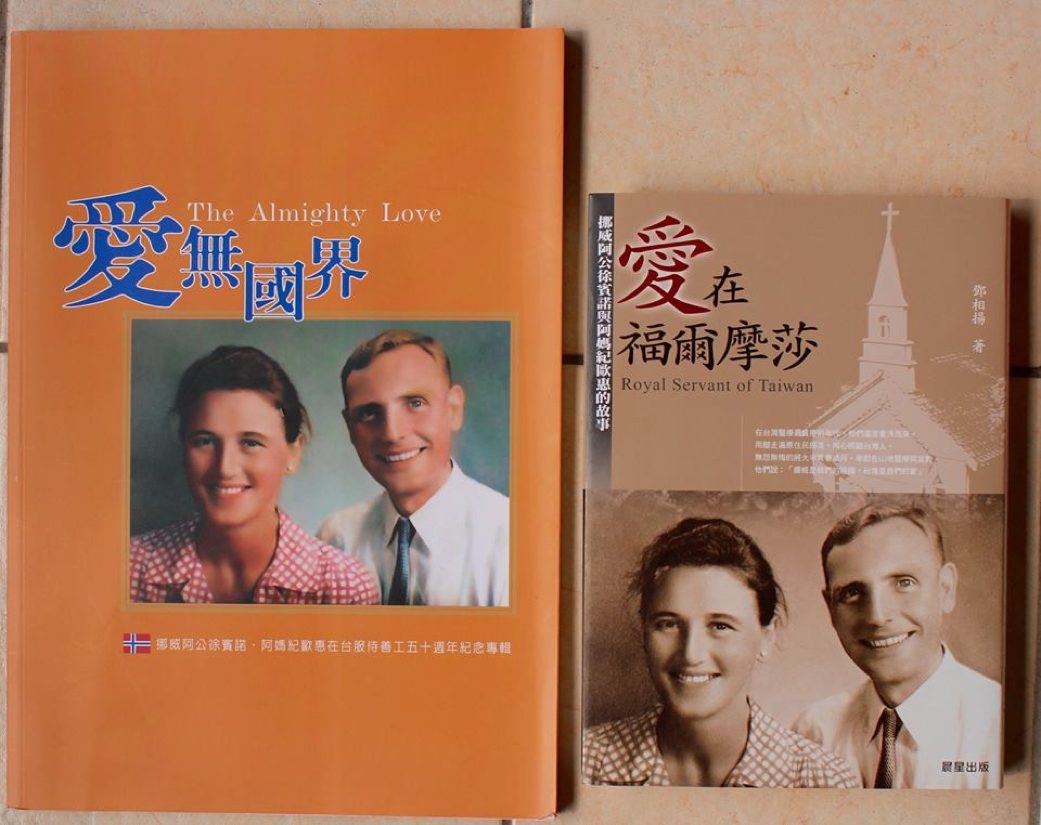
The middle part of the first hospital built in concrete has been moved within the hospital area and is turned into a museum showing the history of the hospital, but also the history of Bjarne from Konsmo to Puli. There are a couple of books published in Taiwan about the Gislefoss couple.
Today, Taiwan has one of the best health care systems in the world and Puli Christian Hospital is highly recognized for its medical ethics through healing others. Since 2009 the hospital did the planning and gave support for building in the former French colony Burkino Faso the first modern hospital with state-of-the-art technology in West Africa. It transferred the skills and knowledge for developing and maintaining the hospital to local staff and participated in a medical assistance program to avoid HIV/ AIDS. In 2016 Puli Chr. Hospital received an honorary degree from Taiwan’s Foreign Minister.
October 31, 2010, Bjarne became a widower, but he still lives in their home at Ime in Mandal municipality in Southern Norway.
